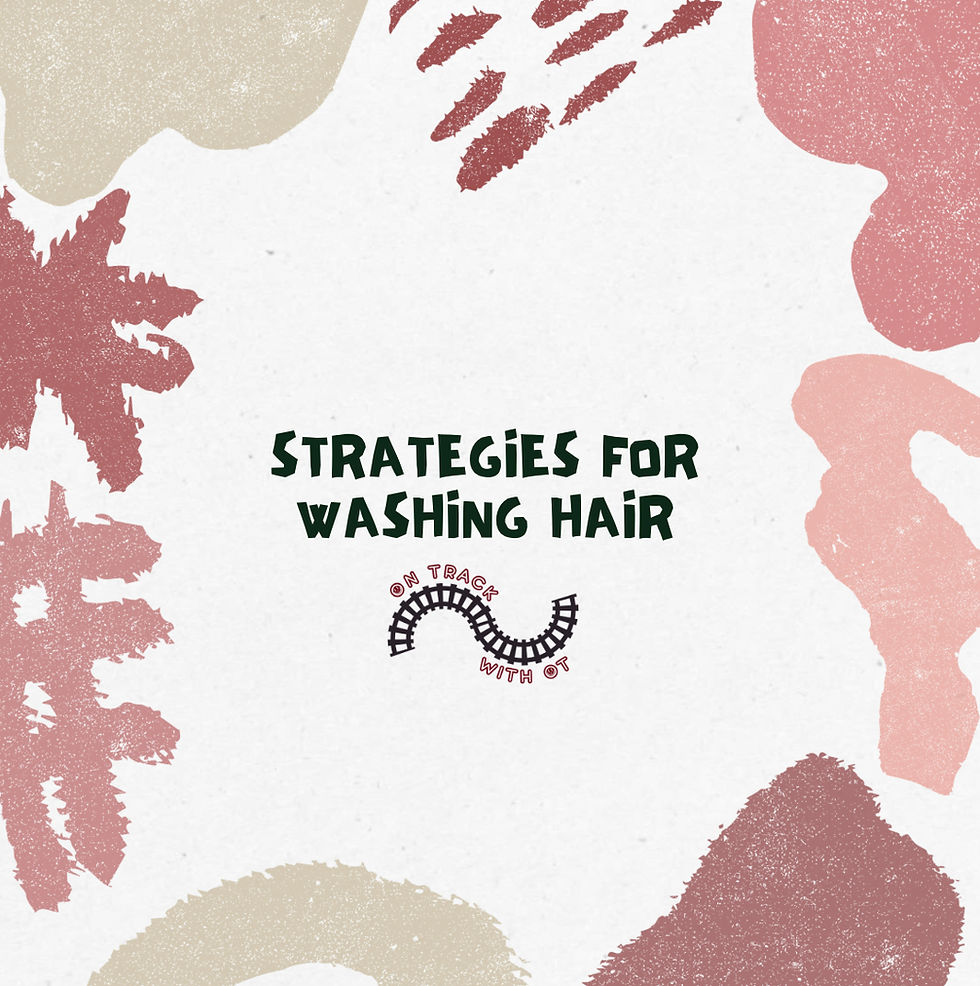Creating an Olympic Torch Craft
- ontrackwithot
- Aug 4, 2024
- 2 min read
As a pediatric occupational therapist, I often seek out activities that are not only fun and engaging but also beneficial for children's development. I also love a good themed activity! One such activity that perfectly combines creativity and skill-building is this "tear and glue" craft project to create an Olympic torch. This craft is simple, but offers a range of developmental benefits. In this blog post, I'll guide you through the steps to create this craft and highlight its therapeutic value.
Materials Needed
Construction paper (various colors): I had brown, red, and orange but did not have yellow, so I just colored a white piece of paper yellow!
Liquid glue
Q-tip (to ‘paint” with glue)
Scissors (optional, for younger children who may need to cut paper into strips before tearing)
A blank sheet of paper (as a base)
Optional: glitter, markers, or other decorations
Steps to Create the Olympic Torch Craft
Prepare the Base: Start with a blank sheet of paper. This will be the base where the torn pieces will be glued to form the picture.
Create the Torch Handle: Choose a color for the torch handle (typically brown, grey, or black). Cut into a triangle.
Add the Flame: Select colors for the flame, such as red, orange, and yellow. Tear strips of construction paper and then tear them into smaller pieces. The act of tearing the paper helps strengthen hand muscles and improve coordination. Arrange and glue the pieces onto the base to form the shape of a flame.
Glue: Squeeze the glue and spread it or “paint” using a q-tip. This is a good way to practice squeezing with the right pressure to apply the right amount of glue. Place the torch and pieces of the flame onto the glue.
Let It Dry: Allow the glue to dry completely. Once dry, the artwork can be displayed!
Therapeutic Benefits of the Craft
Fine Motor Skills: Tearing paper requires the use of small hand muscles, which helps develop fine motor skills. These skills are crucial for everyday activities like writing, buttoning, and using utensils.
Hand-Eye Coordination: The process of tearing and gluing pieces of paper enhances hand-eye coordination, as children must focus on placing the pieces accurately on the base.
Bilateral Coordination: Tearing paper also encourages the use of both hands together, promoting bilateral coordination. This is essential for tasks that require both hands to work together, such as tying shoelaces or cutting with scissors.
Sensory Experience: The tactile experience of tearing paper can be soothing for some children. It also provides sensory input, which can be particularly beneficial for children with sensory processing challenges.
Creativity and Self-Expression: This craft allows children to express themselves creatively. They can experiment with different colors, shapes, and textures, which fosters creativity and imagination.
Following Directions and Sequencing: Completing the craft involves following a sequence of steps, which helps develop sequencing skills and the ability to follow instructions—important for daily routines and learning activities.
Sense of Accomplishment: Finishing a project provides a sense of accomplishment and boosts self-esteem. Displaying their artwork can further reinforce this positive feeling.
Have fun making this Olympic craft!





Comments